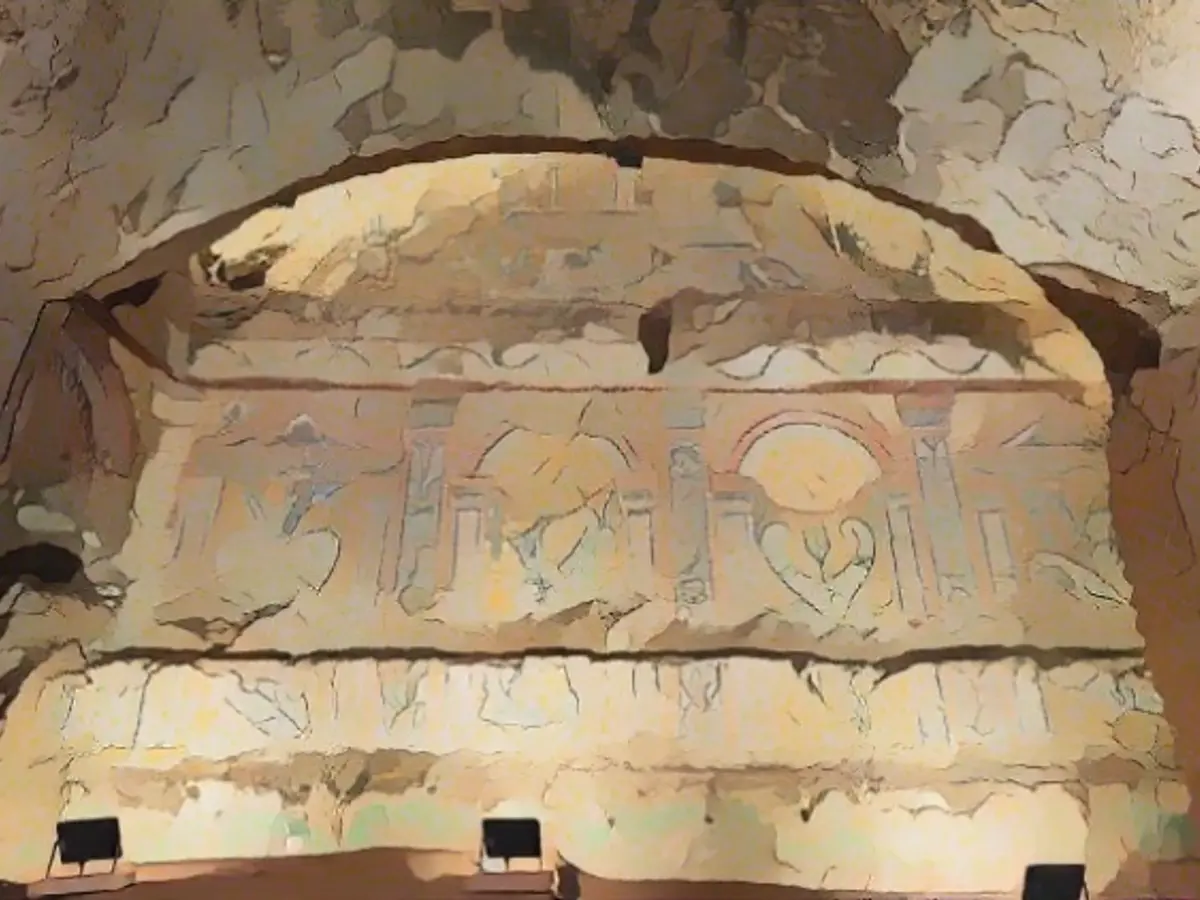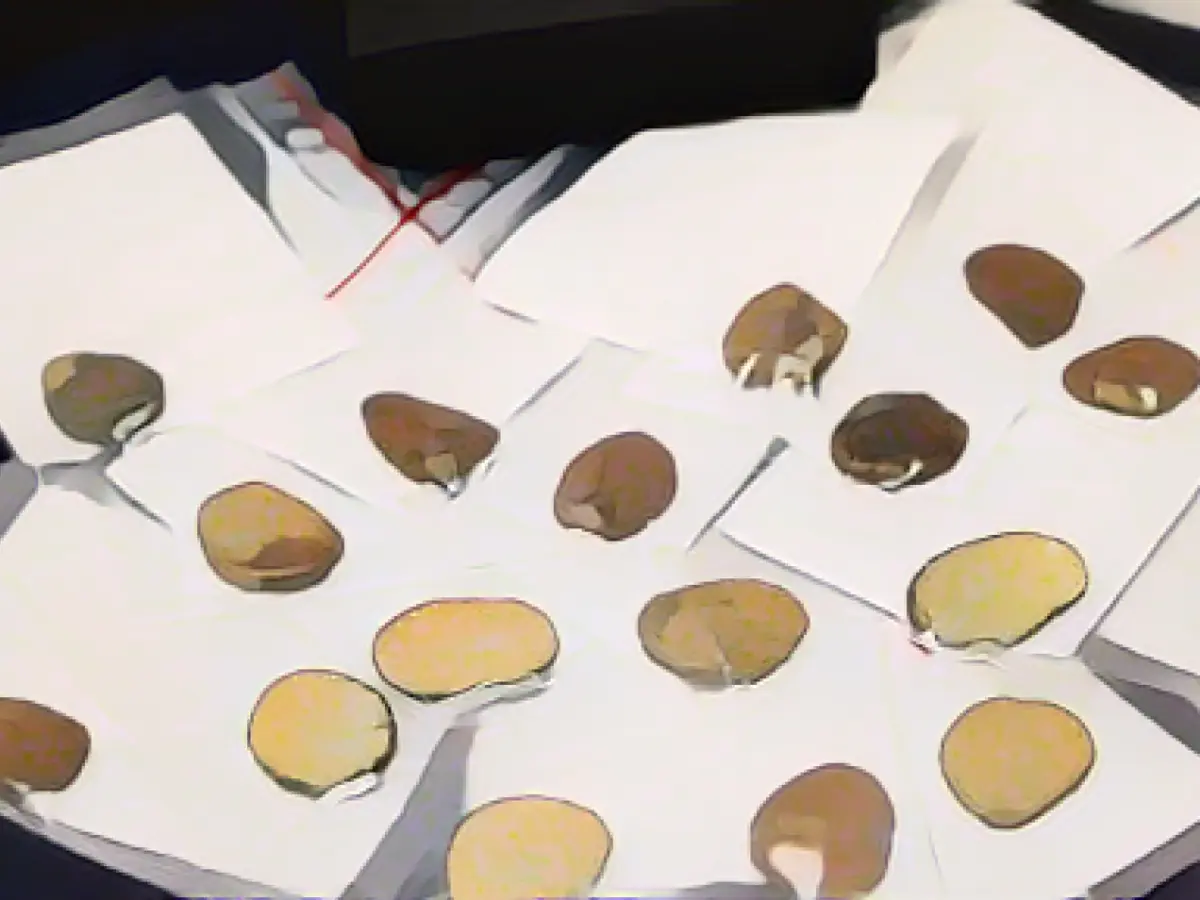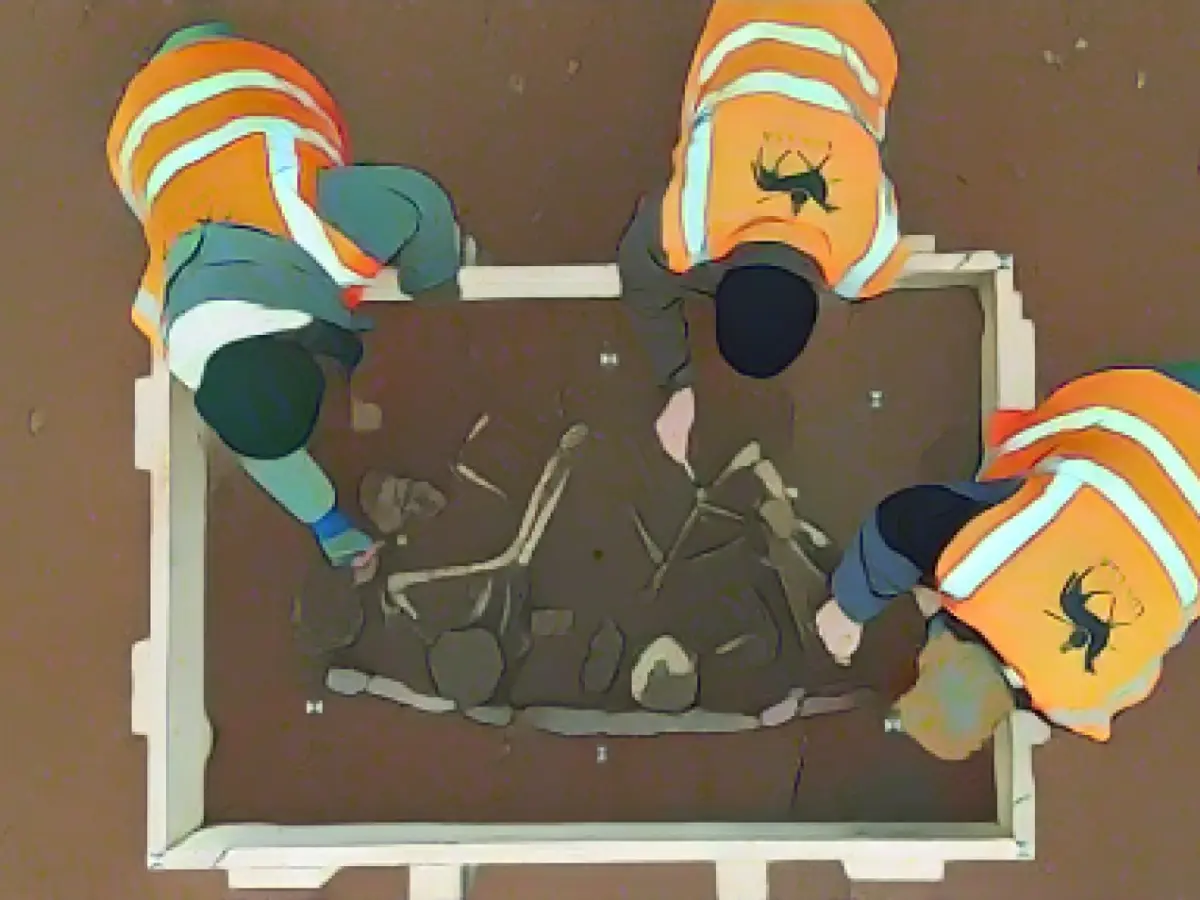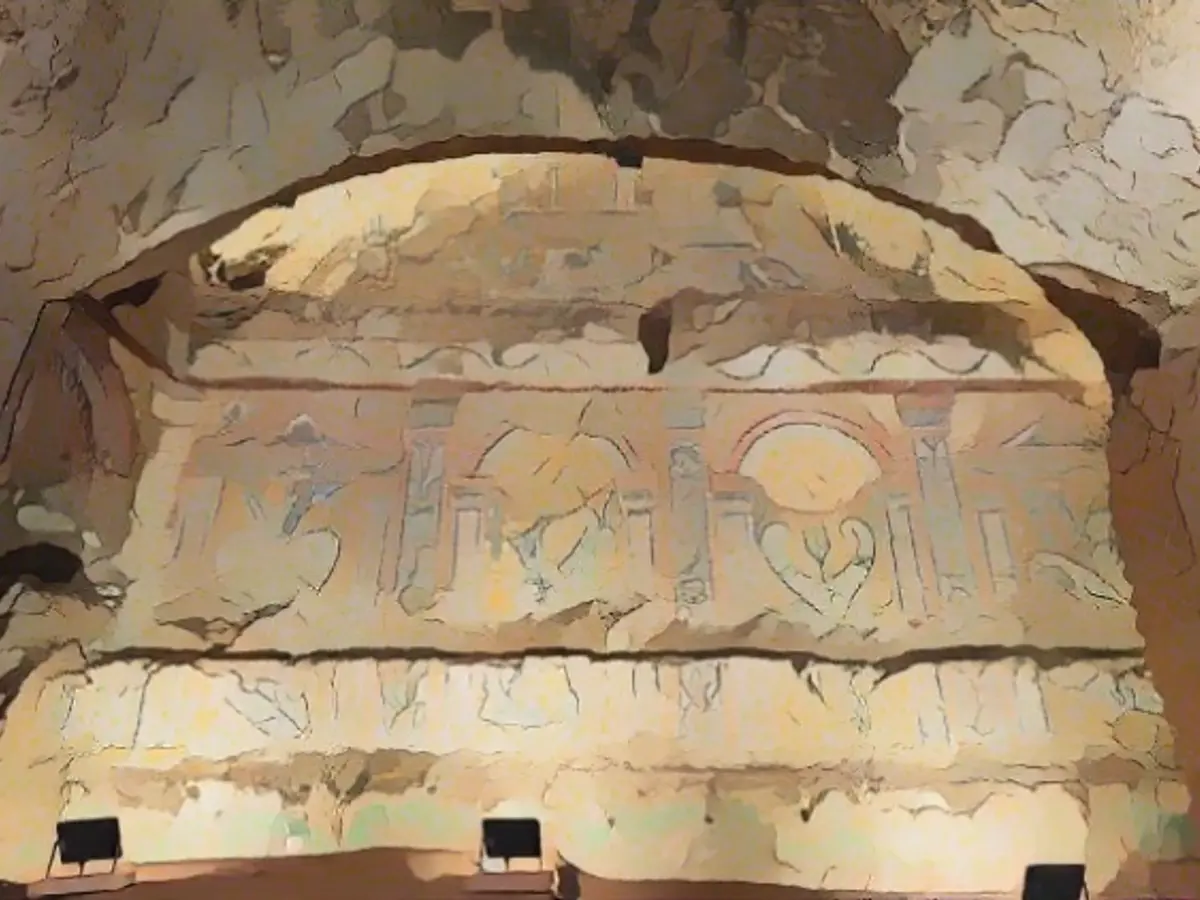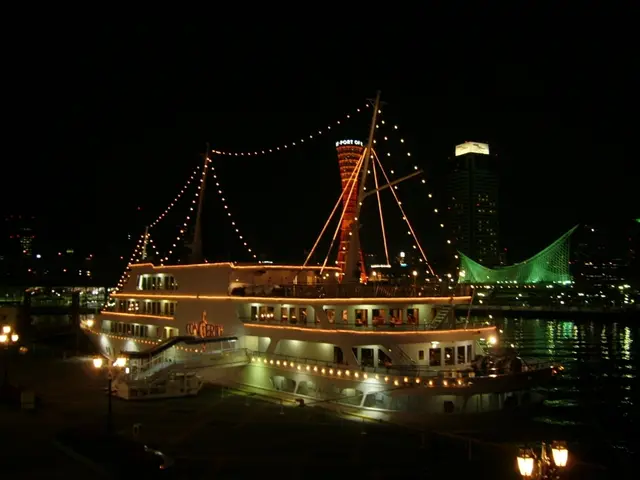Unearthing Wonders Near the Colosseum
The recent unearthing of an ancient Roman dwelling in the heart of Rome, just a stone's throw from the iconic Colosseum, has left scholars and enthusiasts alike awestruck. This hidden gem, brimming with ornate mosaics, has piqued the curiosity of countless archaeologists.
Buried Treasures at the Italian Ministry of Culture's Doorstep
Archaeologists from the Archaeological Park have unveiled a group of rooms in an opulent Roman dwelling nestled between the Roman Forum and the verdant Palatine Hill, one of Rome's seven historic hills. The Italian Ministry of Culture announced the discovery, with experts eagerly sharing their findings.
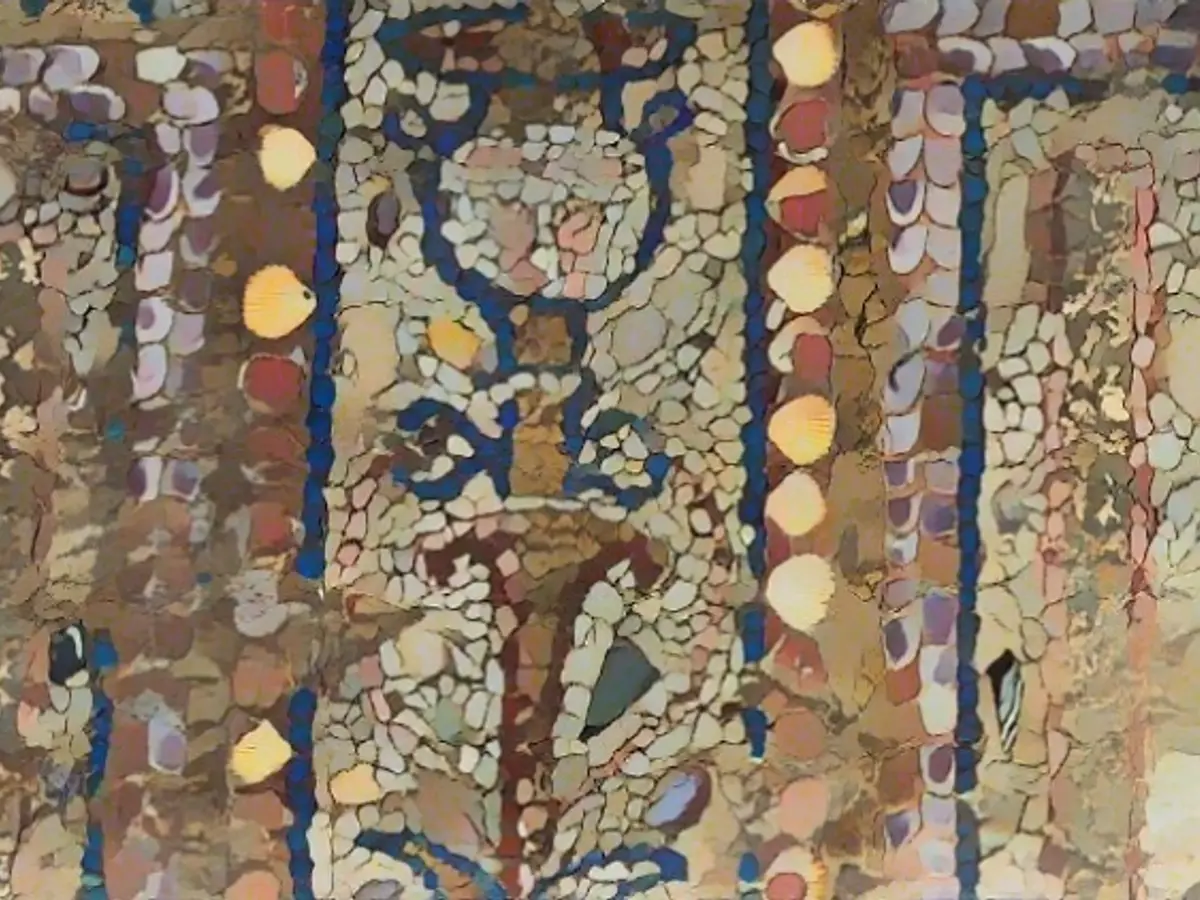
What sets this elaborate dwelling apart are the exquisite mosaics adorning its walls, each a masterpiece of artistry. These murals, showcasing an array of precious materials, such as shells, marble, and glass, depict a series of intricate scenes that leave visitors in awe.
Complex Tableaus of Celtic Influence
Based on preliminary analysis, the mosaics might reflect elements of Celtic influence, such as depictions of Celtic trumpets and trident images. The vibrant tableaus also include scenes of ships, tendrils, and lotus flowers sprouting from vases, as well as building outlines with columns and gates. The meaning behind these vivid pictures remains a mystery.
Unearthed in the Proximity of Wealth and Trade
This luxurious house is located near the Horrea Agrippiana, the oldest monumental warehouse complexes from the Augustan era along an essential trade route in ancient Rome. The house, presumed to have been constructed at the end of the 2nd century BC, appears to have spanned two terraced floors. Surrounded by numerous sites of historical interest, this site adds to the rich tapestry of Roman history.
Additional Insights:
The Basilica of San Clemente, a captivating archaeological site, envelops the ancient Roman dwelling. This site boasts layered history, comprising three distinct periods.
- The modern Basilica, built in the 12th century, sits atop the structure.
- The 4th-century Medieval Basilica, which was in disrepair following a barbarian invasion in 1084, lies beneath the existing one.
- The most astounding layer, though, is the ruin of ancient Roman structures, where relics such as the State mint, private houses, and the Mithraeum (a sanctuary for the Mithraic mystery cult) have been discovered.
This location, in close proximity to the Colosseum, is a poignant testament to Rome's rich past, serving as evidence of the numerous civilizations that have left their indelible mark on the city.
Sources:
